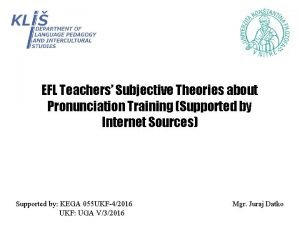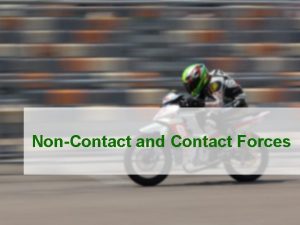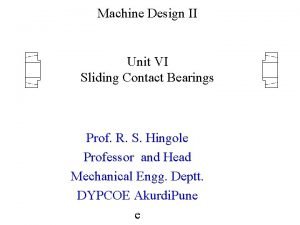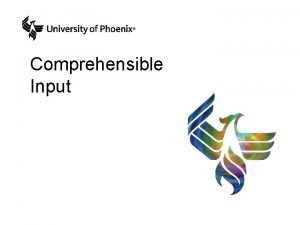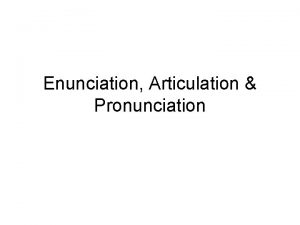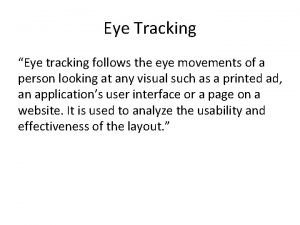Presentation Techniques Voice VolumeProjection Eye Contact Enunciation Facials









- Slides: 9

Presentation Techniques Voice Volume/Projection, Eye Contact, Enunciation, Facials, Gestures

l Making presentations in front of audiences, both large and small, is something you will do for your entire life, no matter what your future holds. Consider this: l l l You will someday ask someone on a date (you must present yourself in a positive light) You will someday ask an adult to borrow his/her car (same as above applies) You will need to interview for a job You will want to ask someone to marry you You will need to ask a banker for a loan (And the list goes on…)

Successful presentations begin with a few, basic techniques. These techniques can be daunting at first, but will become simple with practice.

Technique #1: Voice Volume/Projection l l This means that you use the appropriate volume for the situation and that you send your voice out over the room so that your audience can hear every word you say. Appropriate volume does not always mean LOUD – it means that you modulate your volume appropriately, depending upon the size of your audience and the distance from you. Practice this technique with a partner by standing at several different distances from each other and using different voice volumes until you determine which one is comfortable for the partner to clearly hear without it sounding like yelling.

Technique #2: Eye Contact l l l This means that you occasionally make eye contact with different members of your audience. It does NOT mean that you “stalker stare” at anyone – THAT’S CREEPY!!! You must practice what you will present/read to your audience so that you can find times to look up quickly, make contact with a person, and return to your material without losing your place. [Tip: You don’t actually have to look into anyone’s eyes; they won’t have any idea if you’re actually looking at their foreheads or the wall just over or beside their heads…] Practice this technique with a partner by choosing a short piece of reading material from any source in the room. [5 sentences or so] Practice reading it silently a few times through. Then place yourself a few feet from your partner. Read your selection out loud, pausing occasionally to make eye contact with your partner. Do this three times. Then have your partner present to you.

Technique #3: Enunciation l l l This means pronouncing words so that each syllable is clear and distinct. This helps people to hear and understand you better. You need to think back to when you were little, and you were learning how to say the different letters of the alphabet. Remember how your teacher showed you to open your mouths wide for some letters, put the tip of your tongue against your teeth for other letters, or to purse your lips for sounds? That’s enunciation. Practice this technique with a partner by saying the following phrases faster and faster until the words get jumbled up. Then have your partner do the same. Try to figure out how fast you can go before the words aren’t clear. Barack Obama Rocks! Sister Susie sitting on a thistle

Facials How you use your face is extremely important in theatre. l You must be conscious of your expression every moment you are on the stage, as you never know when an audience member might be looking at you. l Having the wrong expression for your character is just as disturbing to the audience as the wrong vocals. l

Gestures/Gesticulation l l l Gestures are how you use your hands and body to convey messages. Often the messages you convey with your gestures are contrary to what you are saying and reveal the real “tea”. l ie: You say you are calm and relaxed, but your hands are making fists or wringing. l ie: You say you are telling the truth, but your eyes are shifty or your leg is jiggling. Hand movements are the most noticeable, but other body movements are just as important.

Bonus Term: Seeding the Audience l l l To seed/Seeding the audience means that you place specific people (your friends/supporters) into strategic locations in the audience. These “plants” or “seeds” know your performance and know how/when to properly react. People in groups tend to react similarly to those around them, so when the “seed” reacts, others will, too. l ie: when the “seed” laughs, those around the “seed” will also laugh


